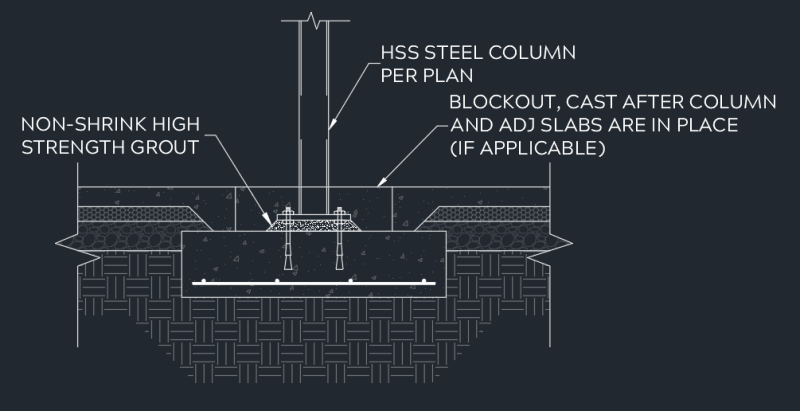Hey guys just wanted some different opinions and thoughts about a detail I use. The scenario is this: a house with HSS columns in the wall that need larger bearing pads. The finished floor is a slab on grade. Typically you want to keep the bearing pads separate from the slab due to movement/settlement but this becomes tricky. Its also tricky to install these columns plumb and in the correct location before the slab is poured. Its also hard to separate them because most customers want a smooth finish slab with no separation joints as a finished floor. What experience or details do you guys have with this? Do you just tie the slab and bearing pad together? Has anyone done what I have shown below? Thank you in advance!


